Brașov is one of Romania’s most enchanting cities, blending medieval charm, dramatic mountain landscapes, and a vibrant café culture. Whether you’re drawn by its rich history, stunning Gothic architecture, or the allure of nearby castles and wildlife experiences, Brașov has something for every traveler. Nestled in the heart of Transylvania, this city offers a perfect balance between urban exploration and outdoor adventure.
Is Brașov worth visiting?
Brasov is a beautiful city in Romania, about 2 hours from Bucharest, and it is well worth a visit with its picturesque squares and lively café scene. Brașov has a new airport, making it an emerging must-visit European city break destination alongside countries like Montenegro and Slovenia.
Surrounded by beautiful countryside, it’s a paradise for history and nature lovers, as you can visit Dracula’s castle, make friends with rescued bears and hike across the mountains. I visited in October 2022 and absolutely fell in love.
In this guide, I’ll go through the best things to do both in the beautiful city centre, and in the stunning countryside surrounding it.
History of Brașov
Brașov was founded in 1211 by the Teutonic Knights, to defend the border of the Kingdom of Hungary. While they didn’t last long, leaving in 1225, the German colonists who came with them stayed in the city, giving Brasov its German feel. They formed a big part of the city’s history, as it became a major trade hub.
The 17th century saw Brașov become a center for cultural and religious activities, particularly for the Romanian community in the Șchei district. The first Romanian-language newspaper, “Gazeta Transilvaniei,” was published in Brasov in 1838, highlighting the city’s role in the national awakening movement.
Following World War I and the dissolution of Austria-Hungary, Transylvania, including Brașov, united with Romania in 1918. Post-war, under communist rule, Brașov underwent rapid industrialization. Notably, between 1950 and 1960, it was renamed Orașul Stalin (“Stalin City”) in honor of the Soviet leader. The city also played a pivotal role in anti-communist movements, with the 1987 Brașov strike marking significant resistance against the regime.
So much of this can be seen in Brașov today, although the medieval elements of the city’s history are a particular highlight. In this guide, I’ll go through some of the most important historical sites in Brașov.
In Brașov
1. Visit Piata Sfatului, Brașov’s main square
Cost: free
Start in Piata Sfatului, the main square, a triangular expanse focused on the Council House, which was built in 1420. The beautiful tower on the building, which now features a clock, was originally for defensive purposes and built from 1521 onwards.
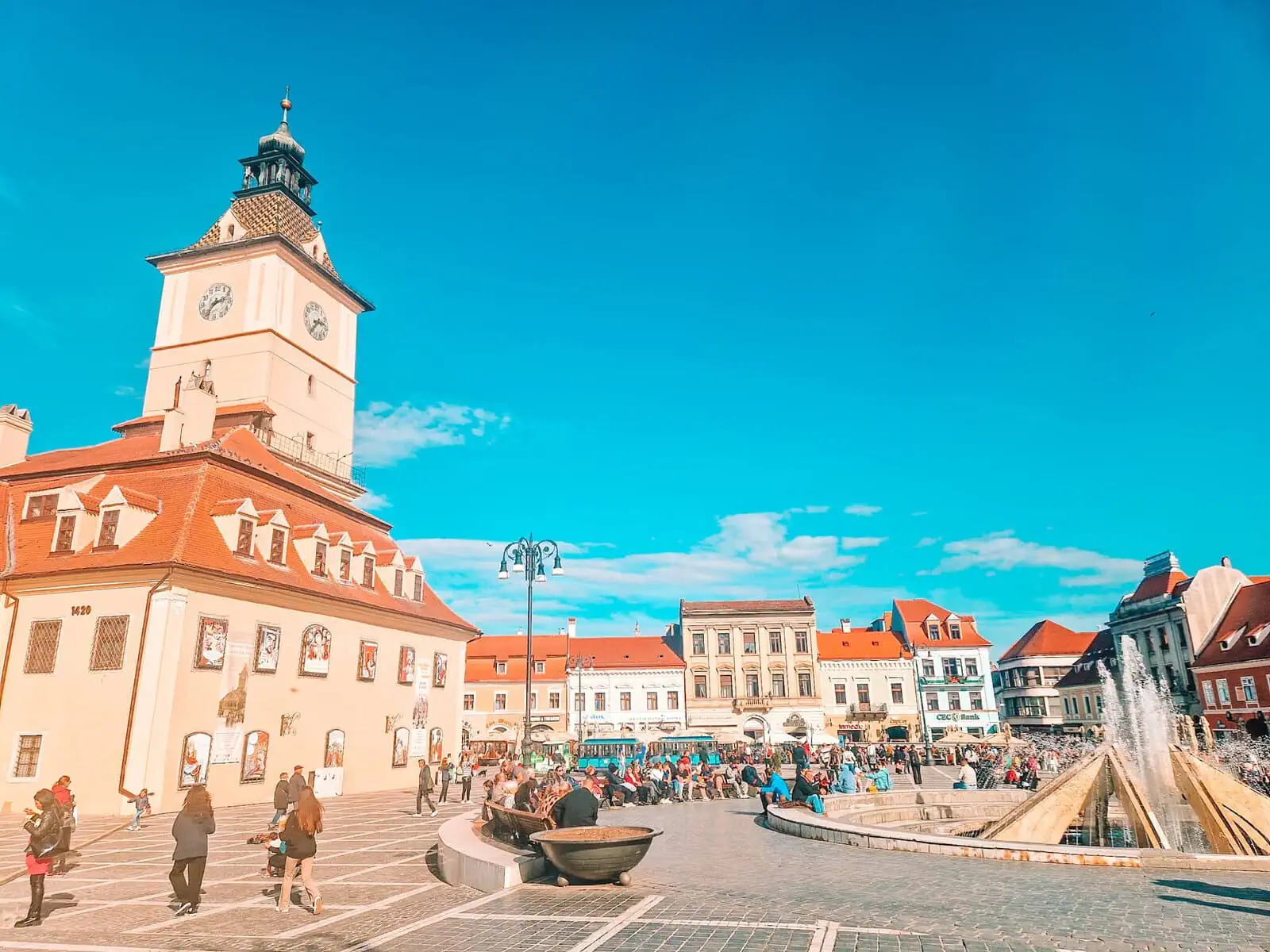
Originally a market square during Brașov’s bustling medieval trade years, the square now has cafes and restaurants clustered around the sides, some of which catch the afternoon sun. It’s a beautiful spot to have a leisurely drink and people watch.
2. Marvel at the Biserica Neagra
Cost: 25 RON (c.$5.50)
Next, head over to the Biserica Neagra, or Black Church. It was constructed during the 14th century by the local Transylvanian Saxon community and finished in 1476. It’s one of the main Gothic buildings in the region, like Bath Abbey and the later additions to Porto’s cathedral. Legend has it that a child was immured in the walls – a more common practice in medieval times than we would like to think. However, there’s no evidence to support this, and we’ll have to hope that all local children made it through construction unharmed.
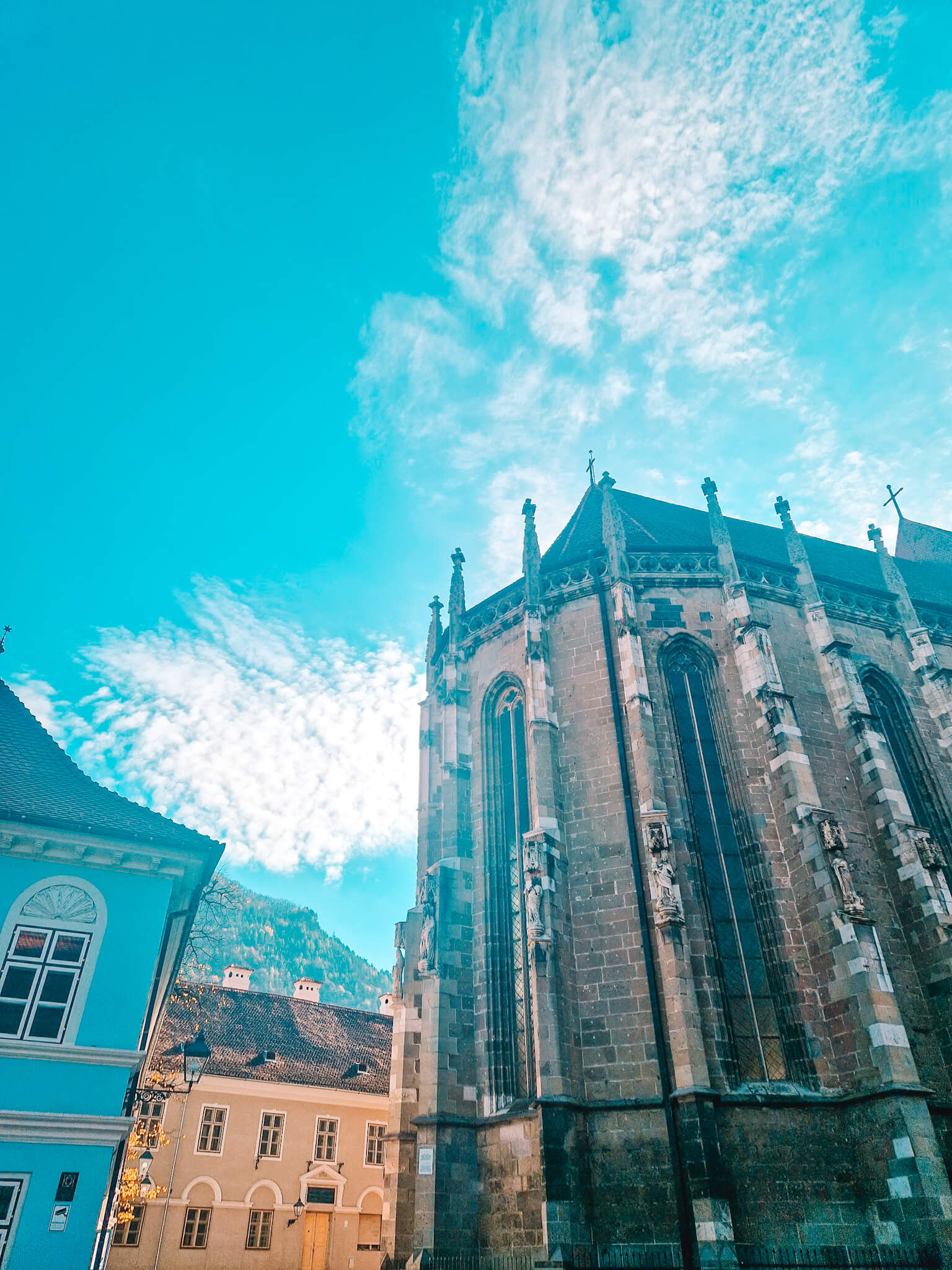
It’s just off the main square and steps away from the clock tower. There’s a lovely shop just opposite selling local items where you buy your tickets.
3. Climb the Black and White Towers for a panoramic view of the city
Cost:
- White Tower – 7 RON (c.$1.50)
- Black Tower- 7 RON (c.$1.50)
Another excellent activity is visiting the Black and White towers, perched on the hills above the city. Like Kotor in Montenegro, Brasov was once surrounded by fortified walls. These towers were originally watch towers along the city walls, with the Black Tower gaining it’s name when a fire scorched the walls after a lightning strike.
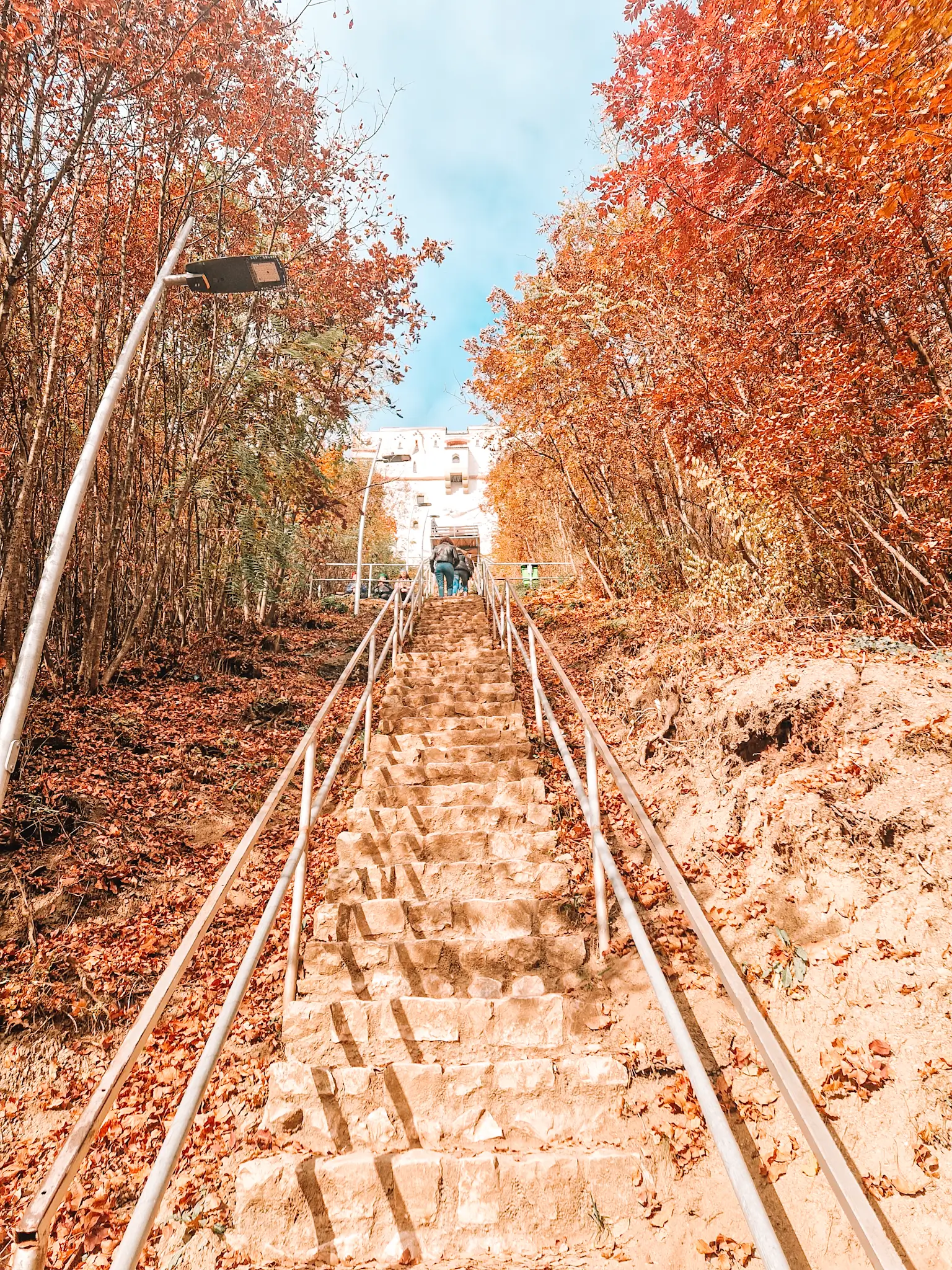
The climb to the Black Tower is pretty easy, but you’ll really feel like you’ve earned your next coffee break after tackling the stairs to the White Tower. It’s worth it though – once you’re there, Brașov is laid out before you like a town out of a fairy tale.
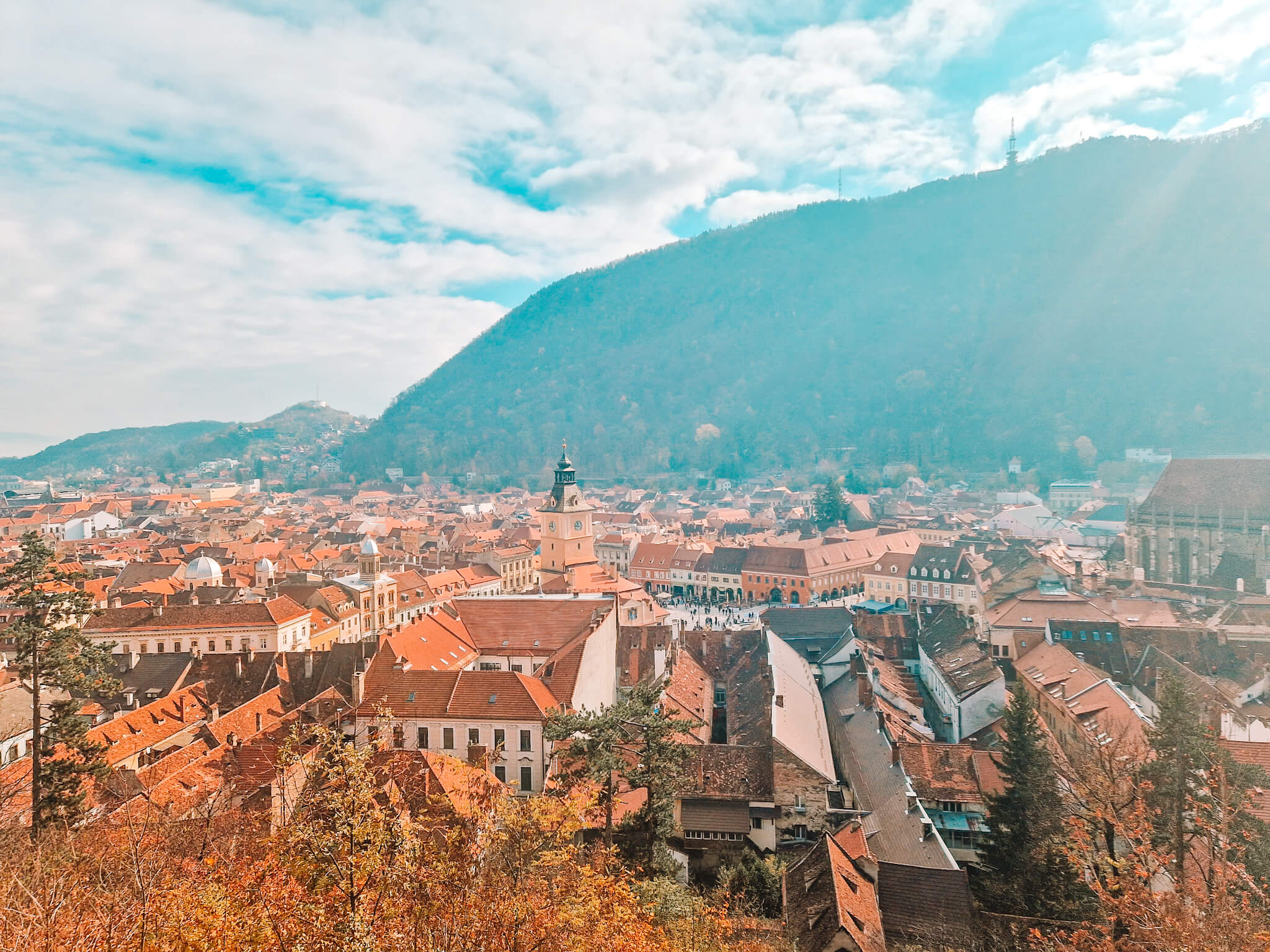
4. Explore one of the narrowest streets in Europe
Take a few minutes to head to Strada Sforii, Brașov’s narrowest street. First mentioned in the 17th century, it was originally built to help firefighters move more quickly around the city.
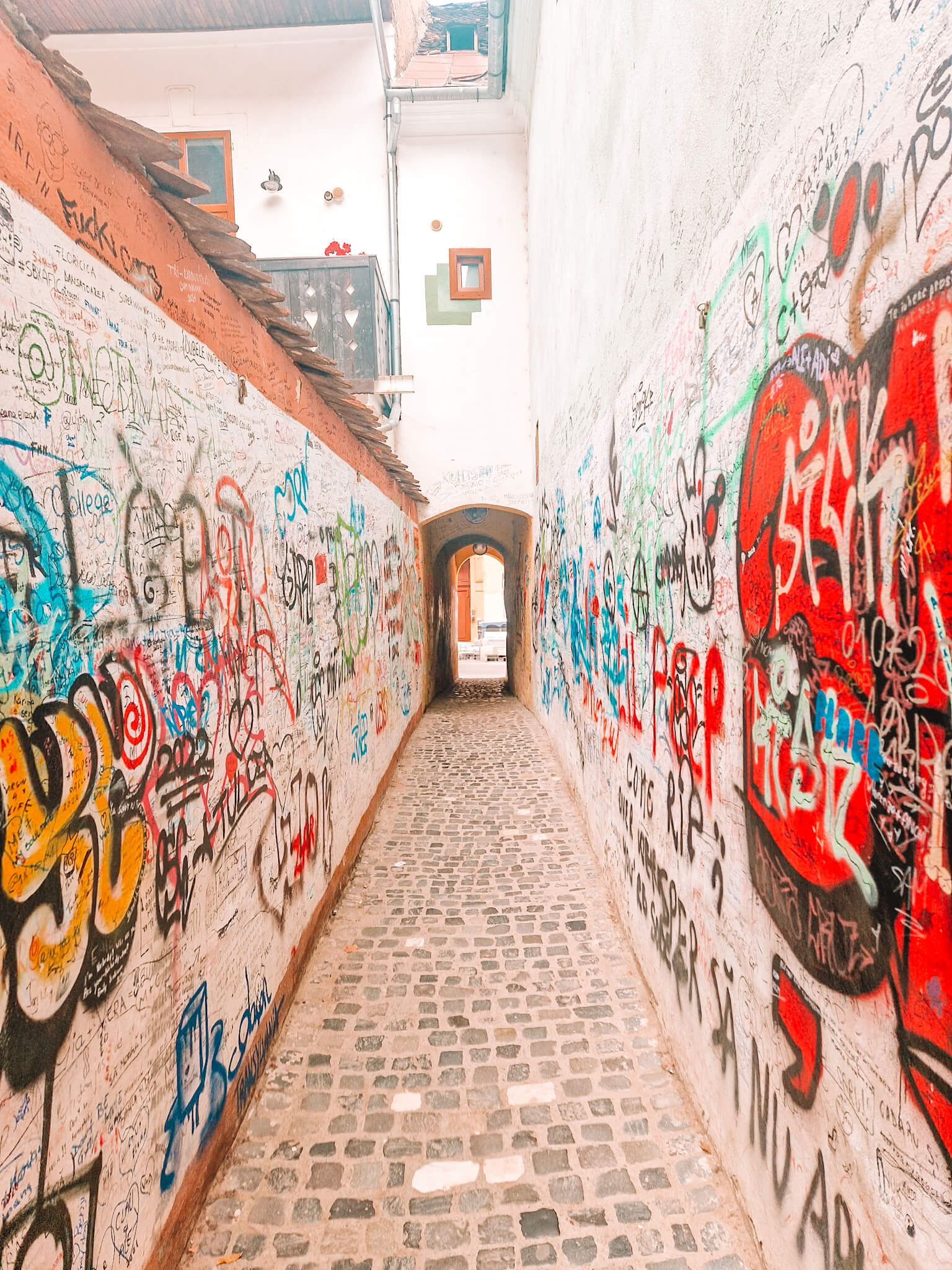
It’s allegedly one of the narrowest streets in Europe. This tiny, graffiti covered alleyway is surprisingly long, not least because you’ll have to navigate your way around visitors coming the other way.
5. Taking your time in Brașov
Brașov is a wonderful town for relaxing and people-watching. Find a cafe, enjoy one of the many glorious ice cream options, and wander the shops. There’s something lovely about meandering slowly around Brașov, enjoying its mediaeval charm.
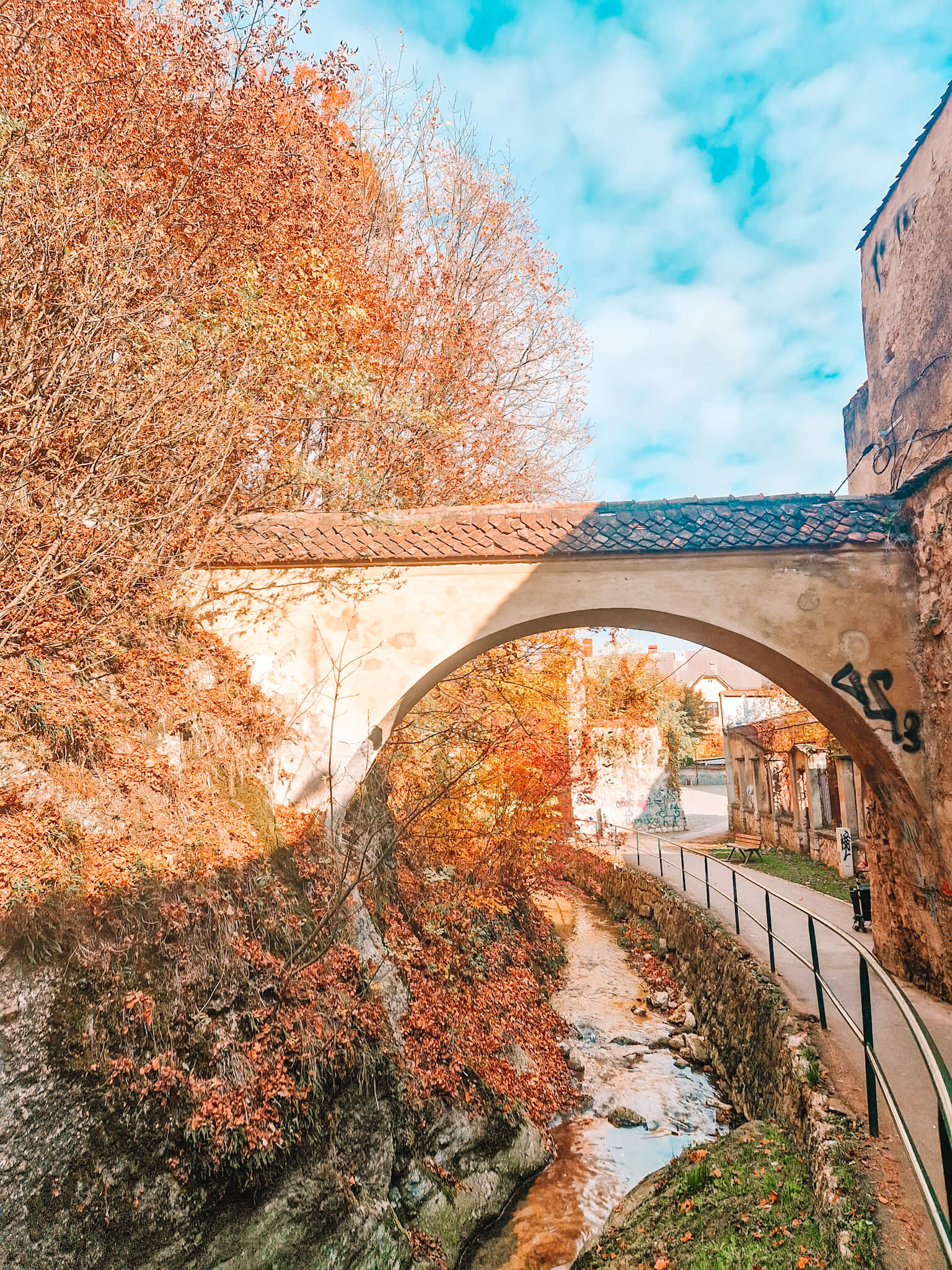
Around Brașov:
6. Hiking
If you are a hiker – which I am definitely not – there is a range of hikes in the Carpathians to suit different abilities. The easiest is hiking up to the famous Brașov sign above the town, which is in the same style as the iconic Hollywood sign. There are full day and multi-day options available as well for people who want to really get out into the beautiful Romanian countryside.
7. Visit a bear hide
Cost: varies depending on tour
My absolute highlight when visiting the town was bear watching. Romania is home to one of the largest bear populations in Europe (only beaten by Russia), with an estimated 8000 bears living in the wild.
There are different ways to view these beautiful, majestic friends around Brașov. I took an evening tour to a bear hide for a bucket-list view of wild bears from a (very safe) bear hide.
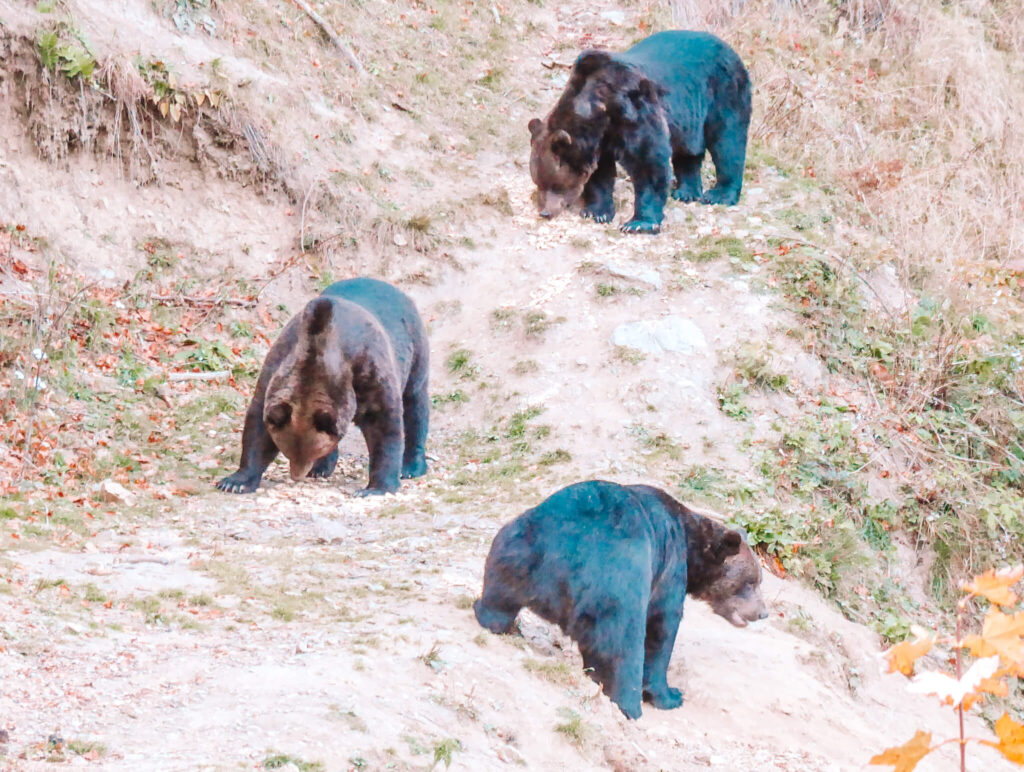
You’ll need to do this in an organised way and the easiest is to book a tour. I used Outdoor Adventures, or this Get your Guide option is highly rated. The hide is down a dirt path and You’ll follow a convoy of cars each evening to ensure you reach it safely.. The tour also starts at different times depending on sunset, so you’ll need to know the exact time to join the convoy. My tour guide was totally worth it – the knowledge he was able to share was invaluable.

8. Libearty Sanctuary – just outside Brasov
Cost: 85 RON (c.$18.50) for entrance without transport
The next morning, I headed out to Libearty Bear Sanctuary outside of town, again with a guide. The sanctuary rescues bears from across Romania, as well as neighbouring countries such as Ukraine. I got to meet Bolik, who was rescued at the beginning of the current war. He was such a cheerful bear that the keepers paired him up with other bears experiencing trauma to try and encourage them to play.
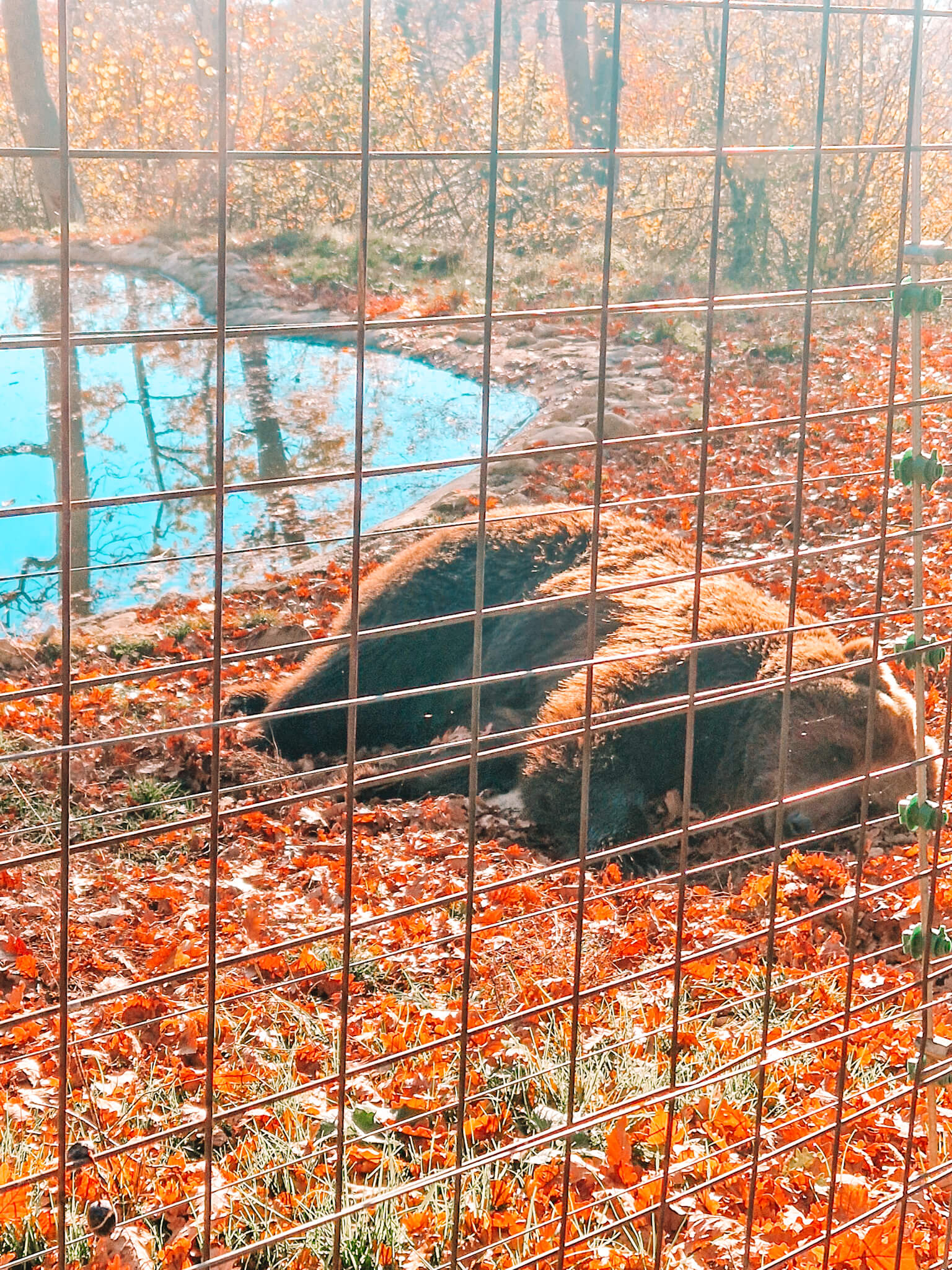
Unlike more commercial wildlife experiences, such as Longleat in England, the sanctuary only allows two trips a day, first thing in the morning. This is because so many of the bears have had traumatic experiences of humans. Keeping the tours so limited means that the bears have the rest of the day to go off and be unbothered in the huge expanse of the sanctuary. They come to the fences for breakfast, and then go off and do their own thing.
This trip is very feasible to do yourself if you hire a car – the sanctuary is easy to find. Make sure you’re booked in advance as the tours do get full. You’ll join one of the two groups – either 8.30 or 9.30am – with a guide to talk to you about how the bears live and where they were rescued from.
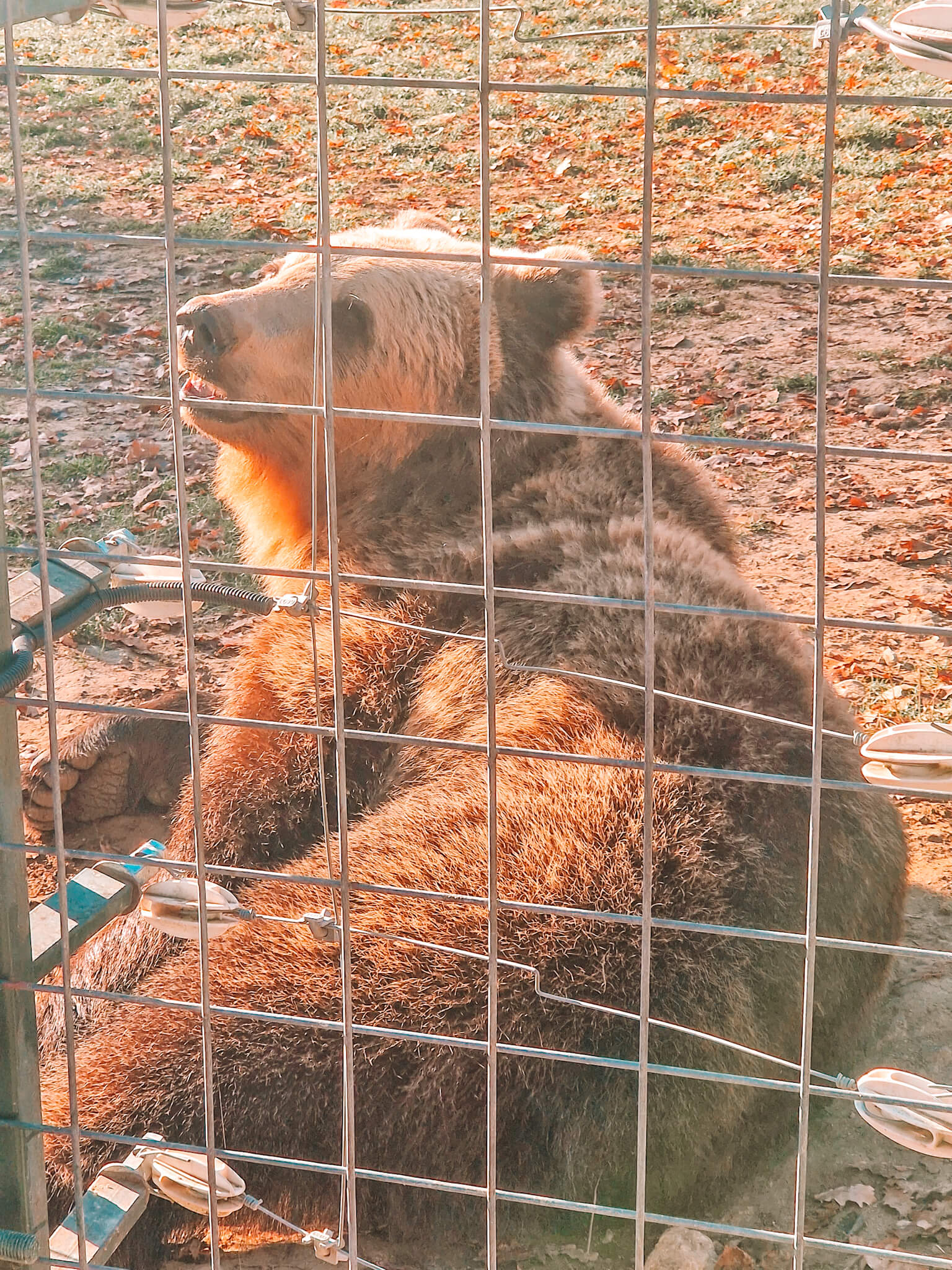
You can also do what I did – have a really incredible personal guide to give you the inside track on different bears, their histories and personalities. I combined this trip with my tour of Bran Castle and Peleș, and was lucky to have a guide who also worked for the bear sanctuary.
I can’t recommend visiting Libearty enough – the bears are sometimes only a couple of feet away from you!
9. Bran Castle
Cost: 70 RON (c.$15)
Finally, the main trips from Brașov are castles – Bran and Peles. The best way to do this is by tour – Bran in particular is not easily accessible by public transport. You can book these easily from Brașov or even from Bucharest.
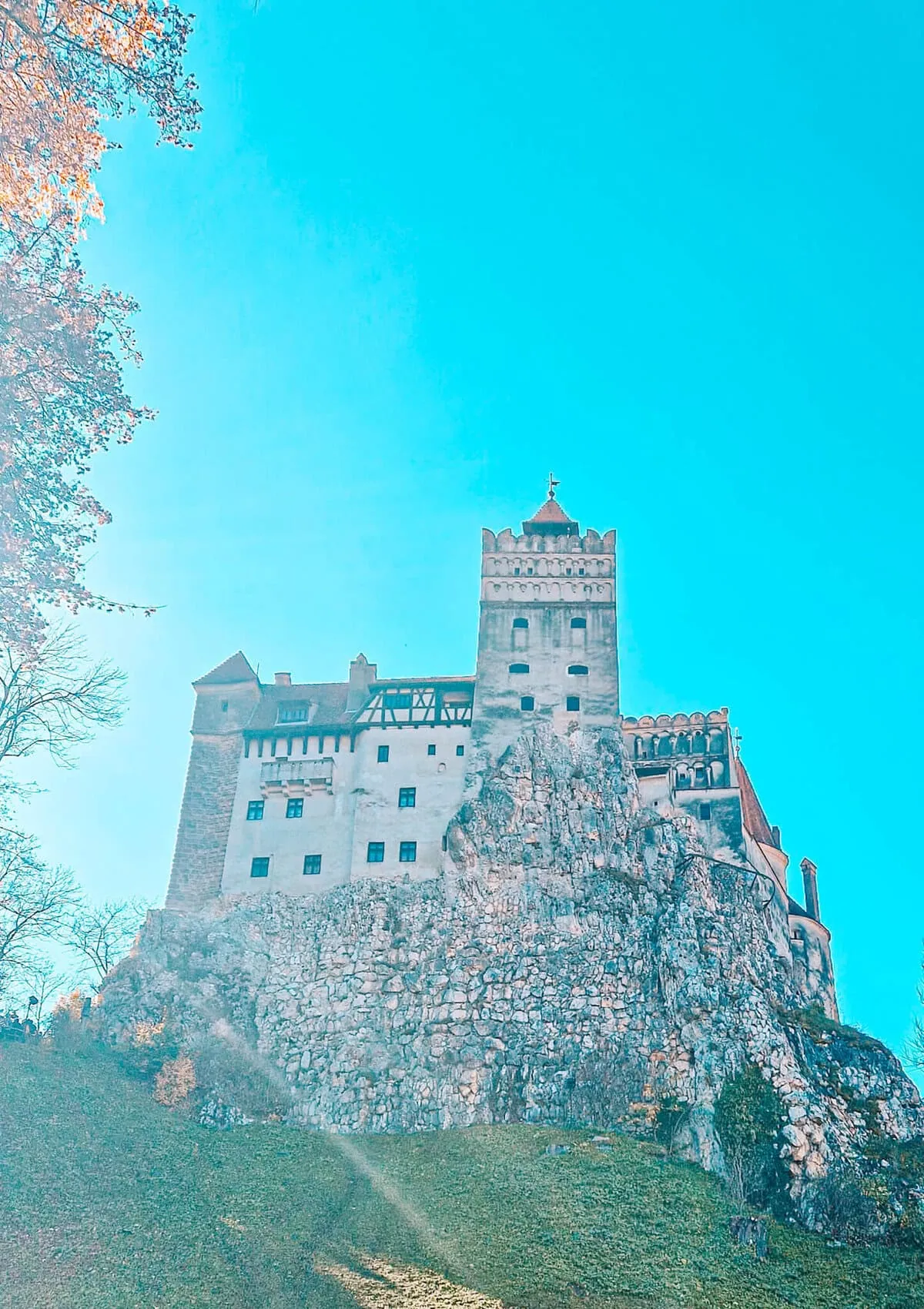
Bran was my personal favourite – a mediaeval castle picked by Bram Stoker off a postcard, which Vlad the Impaler (the inspiration for Dracula) never actually visited. It was built in 1377, and was a major fortification during the medieval period. By the 19th century, it had declined in military importance, but became one of the favourite residences of Queen Maria of Romania in the 1920s and her influence is still clear today.
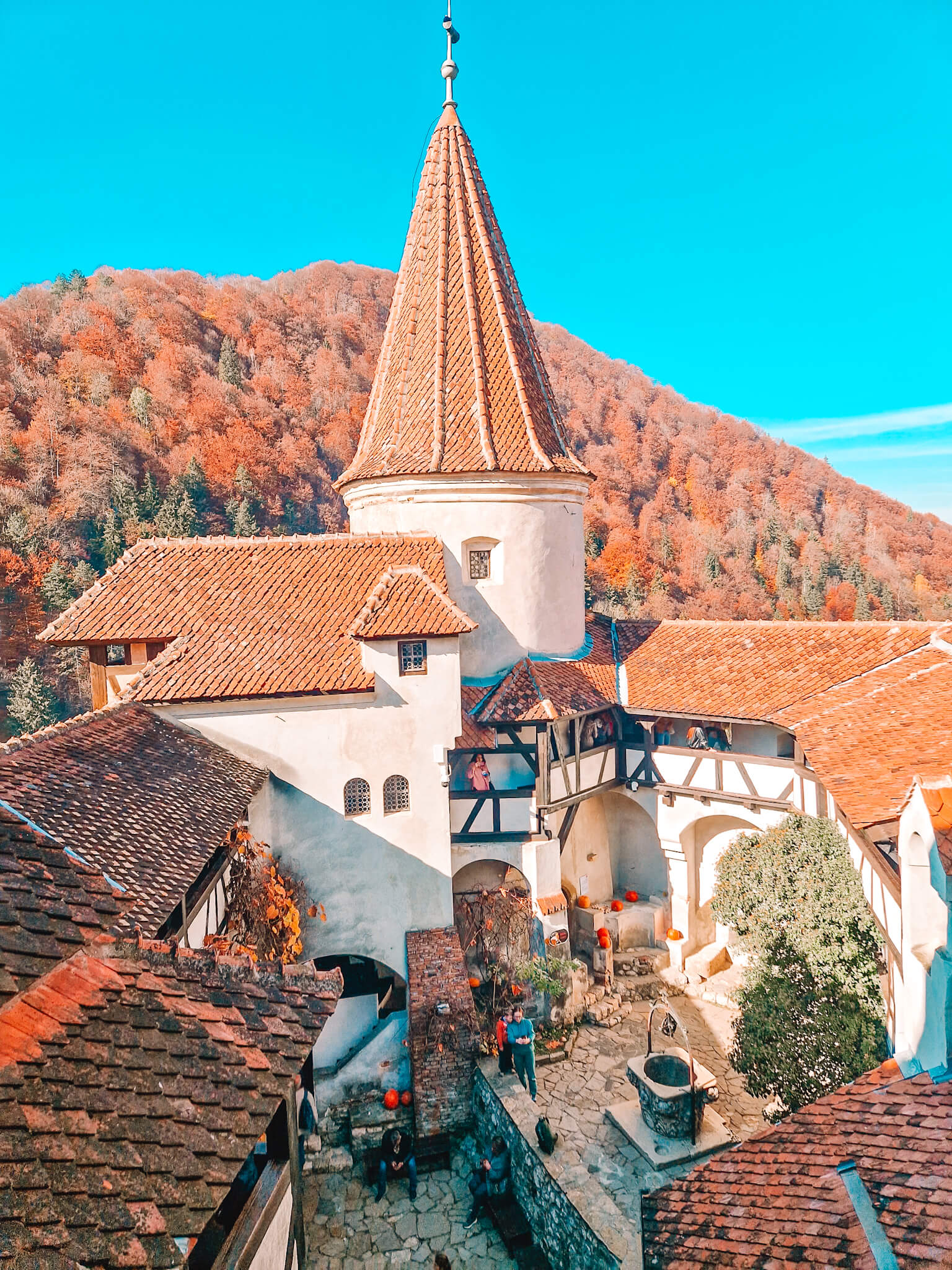
It’s very touristy, and has leaned into it’s fictional heritage. However, I loved the almost homely vibe of the interiors and more interactive exhibitions. It’s also a good lunch stop and there are many stalls outside selling a variety of food to enjoy before you head on to your next stop.
10. Peleș Castle
Cost: 50 RON (c.$11)
In contrast to Bran, Peleș Castle is an architect’s dream, full of astonishing artwork and beautiful decoration. These two castles present very different views of Romania’s (and Transylvania’s specifically) past, and I’d highly recommend visiting them both.
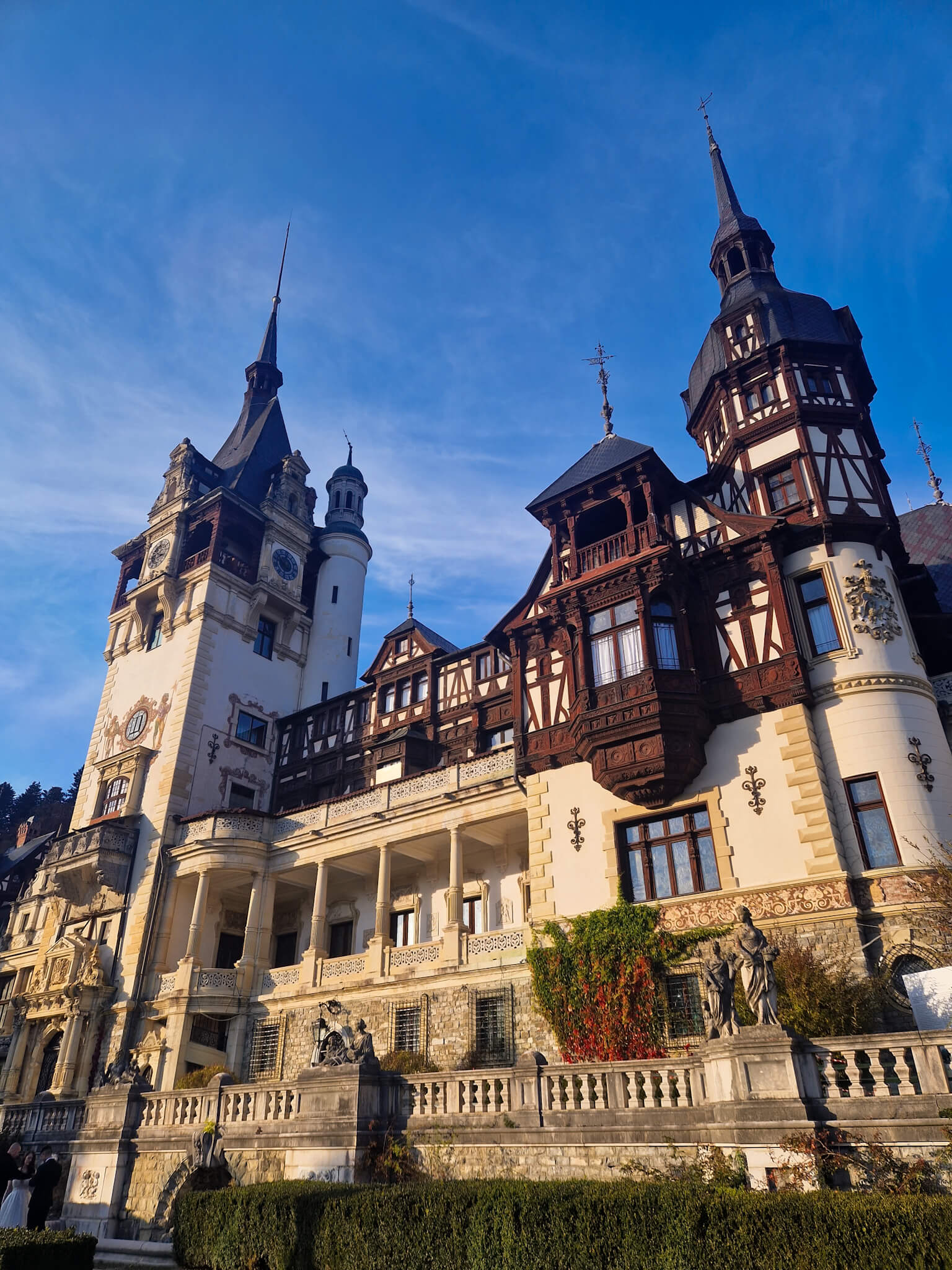
You can get to Peleș by public transport – there are trains to the town of Sianaia from both Brașov and Bucharest. The castle is then a 40 minute walk uphill, or you could take a taxi or local bus.
I visited on my Libearty/Bran castle tour, and as ever, having a guide is invaluable. He was able to talk me through the history of the castle, which was built by Romania’s first King, Carol I, from 1873. With over 170 rooms, including 30 bathrooms, it’s an absolute confection of a castle – with rooms in different themes like French, Florentine and Turkish, spanning dark wood to ornate gold scrollwork. For me, it was a monument to the excesses of wealth – but it is certainly worth seeing.

From wandering the medieval streets of the old town to standing in awe at the foot of Dracula’s Castle, Brașov is a destination that captures both history and imagination. Whether you spend your days hiking in the Carpathians, sipping coffee in Piata Sfatului, or coming face-to-face with Romania’s incredible wildlife, this city leaves a lasting impression. With its mix of cultural heritage, natural beauty, and warm hospitality, Brașov is a must-visit European destination that deserves a spot on every traveler’s itinerary.
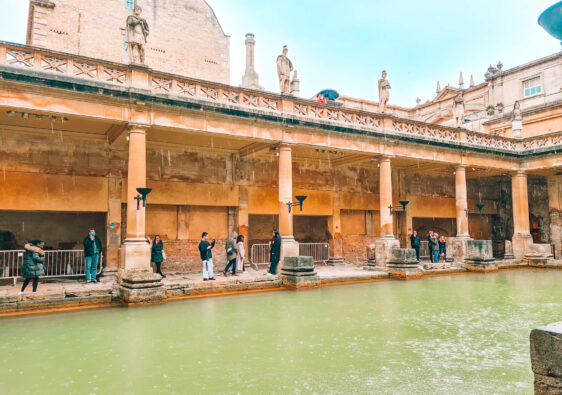

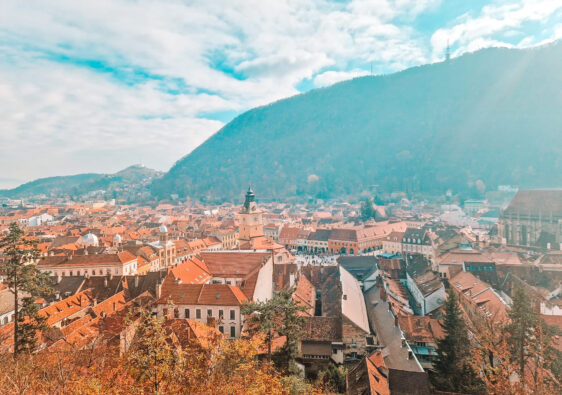
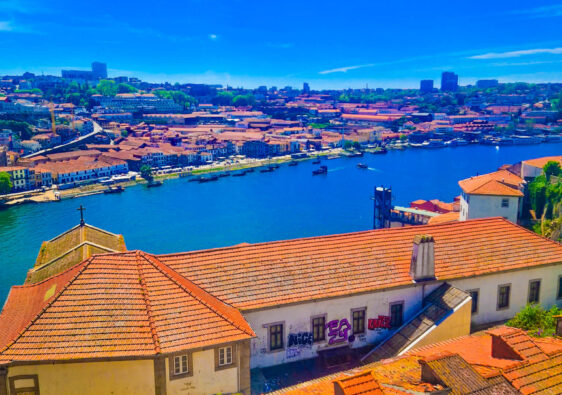
[…] See my ‘Top 10 things to do when visiting Brasov’ blog for more detail. […]
[…] of your next city break after Porto? Check out my guide to Brasov, Romania. A glorious fairy tale city off the beaten track filled with castles and […]